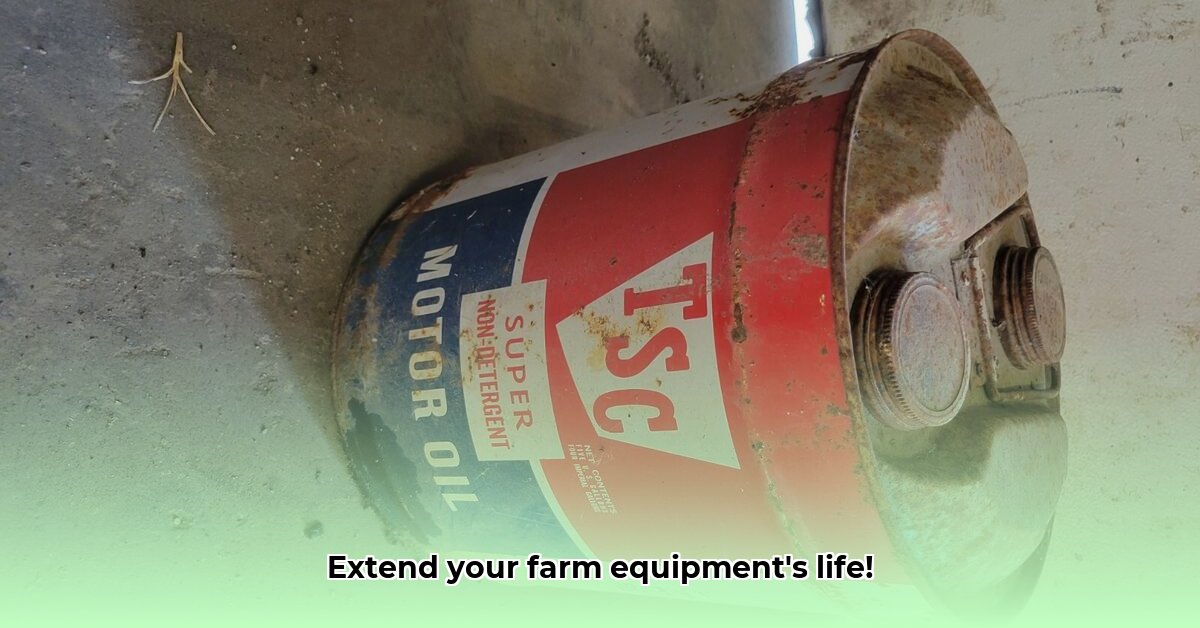
Decoding the Oil Secrets: Choosing the Right Tractor Supply Motor Oil
Keeping your farm equipment running smoothly is crucial for a successful harvest. Proper lubrication is key, and choosing the right motor oil is the first step. Tractor Supply offers a range of options, but selecting the correct viscosity and API certification is paramount. Don't worry; this guide will break down the essentials. Did you know that using the wrong oil can drastically shorten your engine's lifespan, costing you both time and money?
Learn more about Tractor Supply's TruFuel oil line here.
Your tractor's owner's manual is your ultimate guide. It specifies the recommended viscosity grade (e.g., 15W-40, 10W-30), indicating the oil's thickness at various temperatures. This is critical for cold-weather starts and high-temperature performance. API certifications (like CF, CJ-4, SN, etc.) ensure the oil meets specific performance standards for your engine type. Think of these as quality seals of approval.
Here's a simplified table to get you started:
| Engine Type | Typical Oil Viscosity | API Certification Examples | Notes |
|---|---|---|---|
| Older Diesel Tractors | 15W-40 | CF, CD | Thicker oils often work best for these engines. |
| Newer Diesel Tractors | 10W-30, 15W-40 | CJ-4, CK-4 | Newer engines often need oils formulated for modern emission systems and fuel efficiency |
| Gasoline Engines | 10W-30, 5W-30 | SN, SM | Thinner oils are usually preferred for gasoline engines. |
Choosing the incorrect oil is like using the wrong wrench—it might seem to fit, but it'll cause problems. Always consult your owner's manual before purchasing oil!
Your Step-by-Step Guide to a Perfect Oil Change
Regular oil changes are essential preventative maintenance. They can significantly extend the life of your engine, preventing costly repairs and reducing downtime. Here’s a simple, illustrated guide (imagine accompanying images here showing each step):
Safety First! Let the engine cool completely before starting. Wear gloves and safety glasses. This is non-negotiable for your safety.
Gather Your Supplies. You'll need: a new oil filter (check your manual!), the correct amount of Tractor Supply motor oil, an oil filter wrench, a drain pan, and a funnel. Preparation is key for a smooth process.
Drain the Old Oil. Locate the oil drain plug, position the drain pan, and carefully unscrew the plug, allowing the oil to drain completely. This may take some time.
Replace the Oil Filter. Loosen and remove the old filter using the appropriate wrench. Lightly lubricate the new filter's gasket with fresh oil and hand-tighten it securely. Don't overtighten!
Refill with Fresh Oil. Use the funnel to pour in the precise amount of fresh Tractor Supply motor oil specified in your manual. Avoid spills.
Check the Oil Level. Use the dipstick to verify the oil level. Add more oil if necessary to reach the "full" mark.
Replace the Drain Plug. Tighten the drain plug securely, but avoid over-tightening.
Start the Engine. Run the engine for a few minutes and check for leaks.
Recheck the Oil Level. After the engine cools slightly, re-check the level and add if needed. You're done!
The Often-Overlooked Oil Filter: Its Importance in Engine Health
An often-overlooked component, the oil filter is vital for engine health. It removes harmful particles from the oil, preventing engine wear and tear. A clogged filter restricts oil flow, leading to increased friction and potentially catastrophic engine damage. Always replace the filter with every oil change.
Environmentally Responsible Oil Disposal: Recycling Your Used Oil
Used motor oil is hazardous waste. Never dispose of it improperly. Most Tractor Supply stores offer used oil recycling programs. Check with your local store for details. Responsible disposal protects the environment and showcases your commitment to sustainable farming.
Tips for Maximizing Oil Life: Extending the Lifespan of Your Motor Oil
Regular oil analysis (a simple test) can detect potential problems early, preventing engine damage and prolonging the lifespan of your motor oil. Avoid operating your equipment in extremely dusty or harsh conditions for prolonged periods. Protecting the engine from extreme conditions will save you money on oil changes. By following these essential steps, you’ll be maximizing your efficiency and reducing your environmental impact.
“Regular maintenance, using the correct oil, and responsible disposal all contribute to a sustainable and profitable farm operation,” says Dr. Anya Sharma, Agricultural Engineering Professor at State University.
By choosing the right Tractor Supply motor oil and following these steps, you'll significantly extend the life of your farm equipment, reduce operational costs, and contribute to more sustainable farming practices. Remember, preventative maintenance is a smart investment in your long-term success.